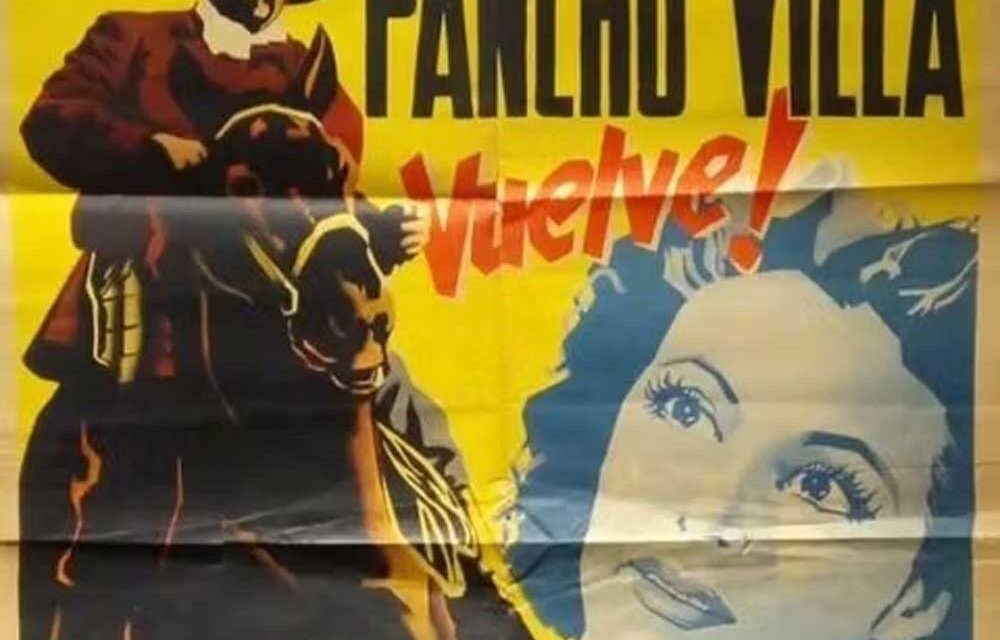During the 1940s and 1950s, Mamá took the three of us, my older brother Peter and sister Lupe and I, to the movies every Friday at the Cine Azteca. which was the only popular form of entertainment. We lived in my beloved Barrio El Azteca in Laredo, Texas and we walked from our house at 402 San Pablo Avenue, down one block to Lincoln Street, turn left, and then two and a half blocks to the theatre. She paid ten cents for each of us and a quarter for her. The projection room was located right in the middle of the balcony. I got to know all the actors and actresses of the Golden Age of Mexican movies: Pedro Infante, Dolores del Río, Jorge Negrete, Emilio Tuero, María Félix, Pedro Armendáriz, Fernando Fernández “El Piche”, Fernando Soler (and his brothers Domingo, Andres, and Julian), Luis Aguilar, Antonio López Montezuma, Yolanda Montes (Tongolele), Joaquín Pardavé, Sara García, David Silva, Marga López, Elsa Aguirre, Gloria Marín, María Antonieta Pons, Libertad Lamarque, Flor Silvestre, Emilio “El Indio” Fernández, and many more. Luis de Anda, in his role as El Charro Negro, was one of my favorite action movie stars. My hero, dressed in all black, including a big sombrero, portrayed the good guy. My other favorite movie star was Pedro Armendáriz.
Among the movies that we saw with Pedro Armendáriz were “Los tres alegres compadres”, “Camino del infierno”, “Por la puerta falsa”, “El charro y la dama”, “La loca de la casa”, and many more. He also played opposite famous Mexican actresses Dolores del Río and María Félix in “Las Abandonadas”, and “Enamorada”.
And it was Pedro Armendáriz that I remember best because when I was growing up in the Barrio El Azteca during the 1940s and 1950s, the talk around the neighborhood was that he had lived in Laredo at one time. During this period, I did not know that his full name was Pedro Gregorio Armendáriz Hastings, and that he was born in Mexico City on Thursday, May 9, 1912. All this information about his full name and the place and date of birth I just discovered a few days ago. We only knew him as Pedro Armendáriz, the film star actor.
And only recently did I find out that his father was Pedro Armendáriz García-Conde, and his mother was Adele Hastings, an Anglo-American. He also had a younger brother by the name of Francisco. I also discovered that the family moved to Laredo, Texas and lived on the 1800 block of Salinas Avenue until the early 1920s when both of his parents died, and an uncle took care of them. Wow! I sure did not know all this very interesting personal information when I was growing up.
Shortly thereafter, he started his movie career in Mexico and in the United States. Pedro Armendáriz was known for playing tough, masculine characters in Mexican and American cinema and starred alongside legendary actors like John Wayne and Sean Connery. He starred as Mexican Revolutionary leader Pancho Villa in three different Western films and a television series. Pedro Armendáriz made fifteen movies in Hollywood, from 1947 to 1963, and he would also have movie roles in Italian and British cinema. And he played a major role in the 1963 movie, From Russia with Love, alongside Sean Connery. This Bond outing would be Armendáriz’s final role, as he was terminally ill with cancer during the filming of the movie. Whilebeing hospitalized in Los Angeles, California, he committed suicide at the age of 51 on Tuesday, June 18, 1963, before the film was released. He is buried in the Panteón Jardin in Mexico City.
If I recall correctly, the Cine Azteca was located at 311 Lincoln Street and was situated in the heart of the historic Barrio El Azteca. It is estimated that the building was constructed with an expansive high facade and a Mission Revival parapet during the 1920s and named the Teatro Nacional and was used for vaudeville Mexican shows. In the 1930s, when movies became popular, it became known as the Cine Azteca and showed Mexican movies. American movies were consequently added to the program but on a limited basis. The ticket booth was located in the center entrance. If you are standing in front of the theater, to your left was the concession stand with a big glass window. And to the sides of the entrance, the movie posters were located in glass frames showing the current features and the coming attractions.
When Jo Emma and I went to visit the Cine Azteca in 1995, she took the two attached photographs. As shown in the second photo, the inside of the theater was being utilized as a storage facility. The view is toward the front, where the big white screen used to be.






